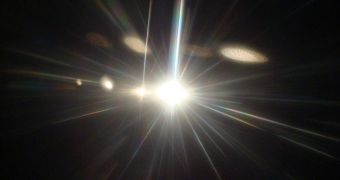Physicists from the University of Michigan announce the discovery of a new magnetic effect caused by light. This is the first time this is observed, and experts say that the discovery overturns a 100-year-old theory that has been governing this field of research.
According to the team behind the new work, the effect is both surprising and dramatic, and it could be used to create a sort of optical battery. This means that the need to use traditional semiconductor-based solar cells to harvest the Sun's energy may be entirely eliminated.
The interaction that experts discovered is very odd, they say, and this is why it remained unnoticed for more than a century. Also, the finding is not at all intuitive, adds the leader of the new research, Michigan professor Stephen Rand.
He holds joint appointment with the departments of Electrical Engineering and Computer Science, Physics and Applied Physics at the university, and is also the author of a paper describing the study.
“You could stare at the equations of motion all day and you will not see this possibility. We've all been taught that this doesn't happen,” explains Rand, whose work appears in the latest issue of the esteemed scientific Journal of Applied Physics.
The expert conducted the new study in an area of photon research that was largely ignored by others. For centuries, physicists have known that light has both electric and magnetic components. However, the latter was always ignored, due to its weakness.
Rand instead demonstrates that these magnetic fields can become 100 million times stronger than previously estimated, provided that an intense field of light is traveling through a material that does not conduct electricity.
As this happens, the intensity of the magnetic fields become as strong as those of the usual electric field light generates. “This could lead to a new kind of solar cell without semiconductors and without absorption to produce charge separation,” Rand explains.
“In solar cells, the light goes into a material, gets absorbed and creates heat. Here, we expect to have a very low heat load. Instead of the light being absorbed, energy is stored in the magnetic moment,” he adds.
“Intense magnetization can be induced by intense light and then it is ultimately capable of providing a capacitive power source,” the expert goes on to say. Right now, the Michigan team is getting ready to test the new technology in practice.
At first, they will use laser light to generate this effect, and then – later this summer – they want to move on to using actual sunlight. The team expects to reach a 10 percent conversion efficiency, which is the equivalent of modern, commercial-grade solar cells.

 14 DAY TRIAL //
14 DAY TRIAL //